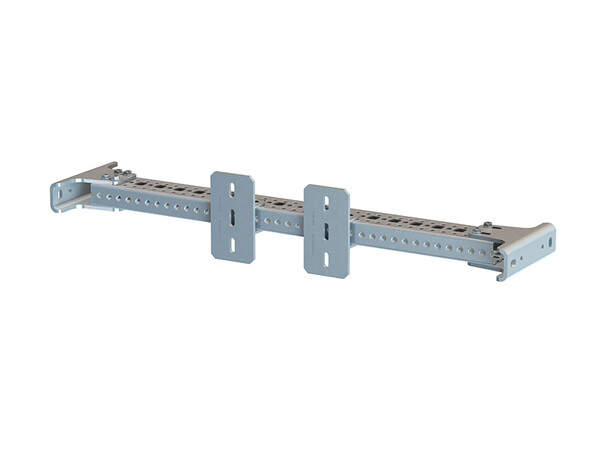Why does the lift sector use assembly systems so seldom?
If the shaft wall is too far away to attach guide rails directly, support structures are needed. For this purpose, Hilti has developed a new modular assembly system for the lift sector. But why does the lift sector use assembly systems so seldom?
By Dr. sc. techn. (ETH) Michael Merz
Whether the problem is that several lifts have to be installed in one large shaft but there are no partitions or that in the context of a modernisation the geometry of the shaft is unsuitable for the layout of a modern lift: whenever guide rails cannot be attached directly to the wall with dowels, support structures are called for. Building contractors frequently leave out the front wall of the lift shaft since they do not know what the layout of the landing doors will look like.
Or they wish to avoid troublesome reworking if the doorways were defectively designed. Support structures are also needed here for the door impost or frame.
The more complex the support structure needed, the more elaborate its installation. Partition supports are installed by the lift builder itself using prefabricated steel girders. By contrast, structures that include vertical supports and attachments for the door frame are often produced by a steel engineering firm before the installation of the lift has begun.
These components are heavy and have to be transported with special hoisting equipment at the installation site and positioned there. Welding is employed to create sturdy connections. This is not ideal for the lift sector's dominating concern for security since there is a risk of accidents and fires. Consequently, assembly normally occurs separately from the installation of the lift.
Modular assembly system
 Photo: © Hilti
Photo: © HiltiBy contrast, handling a modular assembly system would be much simpler. Their components are light and employ a plug-in principle. This means even without attachment a secure connection is possible, which is later stabilised by screws. The assembly sequence is similar to that of the guide rails and can occur together with the installation of the lift.
This sounds good but can the assembly system meet the technical requirements of the lift sector? The support structures to which the components of the lift are attached are responsible for the safety of the car in the event of an emergency stop and in operation for the travel comfort.
In the event of a stop, the structure must for decades withstand high loads, may not move in operation and must withstand the dynamic stresses of the travelling, differently-loaded car. Are support structures made of modular systems capable of this?
Integrated in a database
The design of modular support structures is supported by proprietary software. Based on the geometry, force transmission points and actual forces, it checks the behaviour of the structure. It defines the maximum shift at the force transmission points and capacity utilisation of the weakest system components.
The basis for this is a detailed analysis of the individual components by means of the finite element method (FEM) and verification by practical tests. All results are integrated in a database that the design software accesses when testing the structure. In addition, a detailed item list of the approved structure and 3D assembly drawing are provided.
The author is Competence Build-up Manager for the lift sector at HILTI AG in Schaan, Principality of Liechtenstein.
More information: hilti.com
The Hilti MT System for the lift sector






















Write a comment